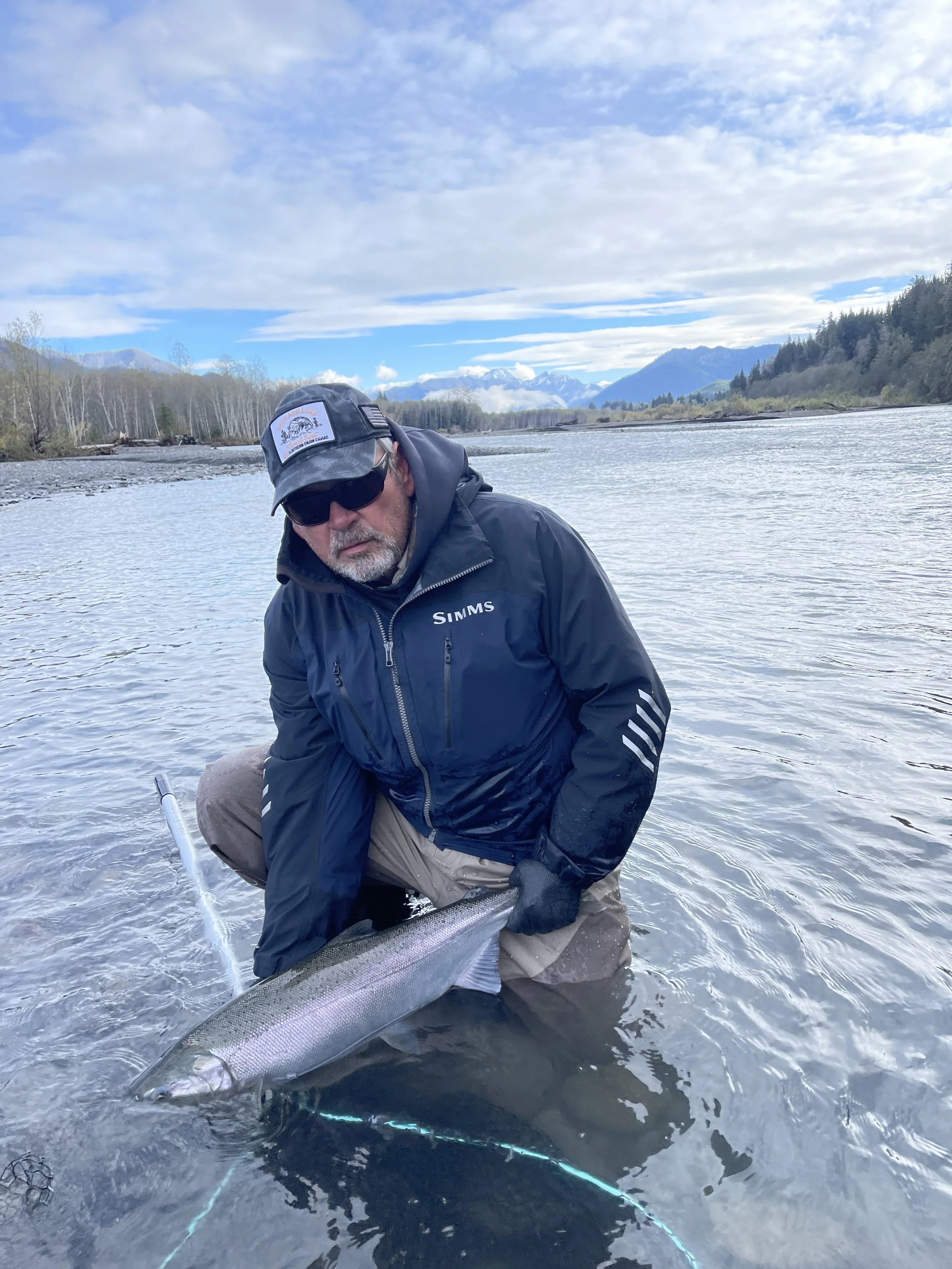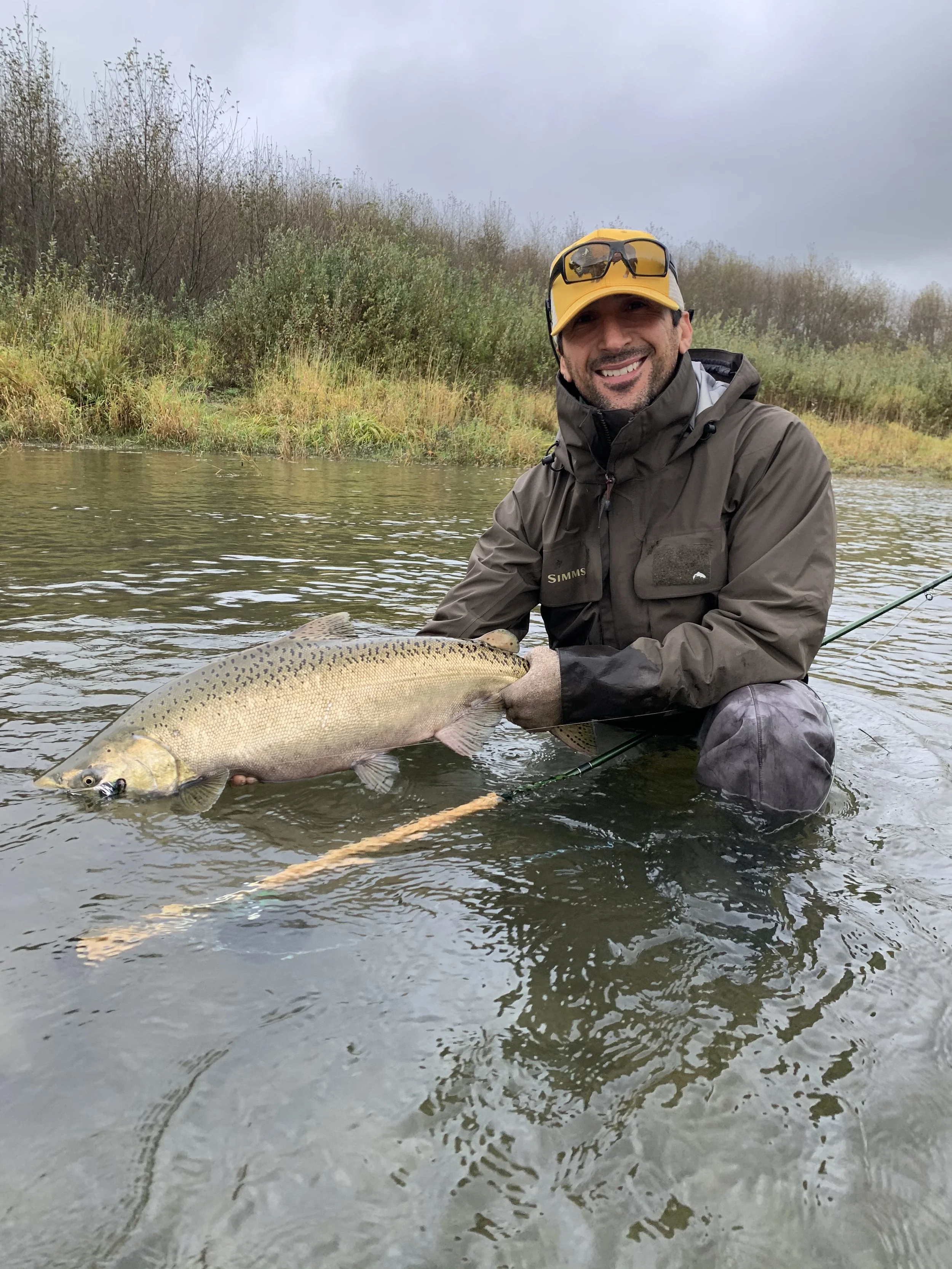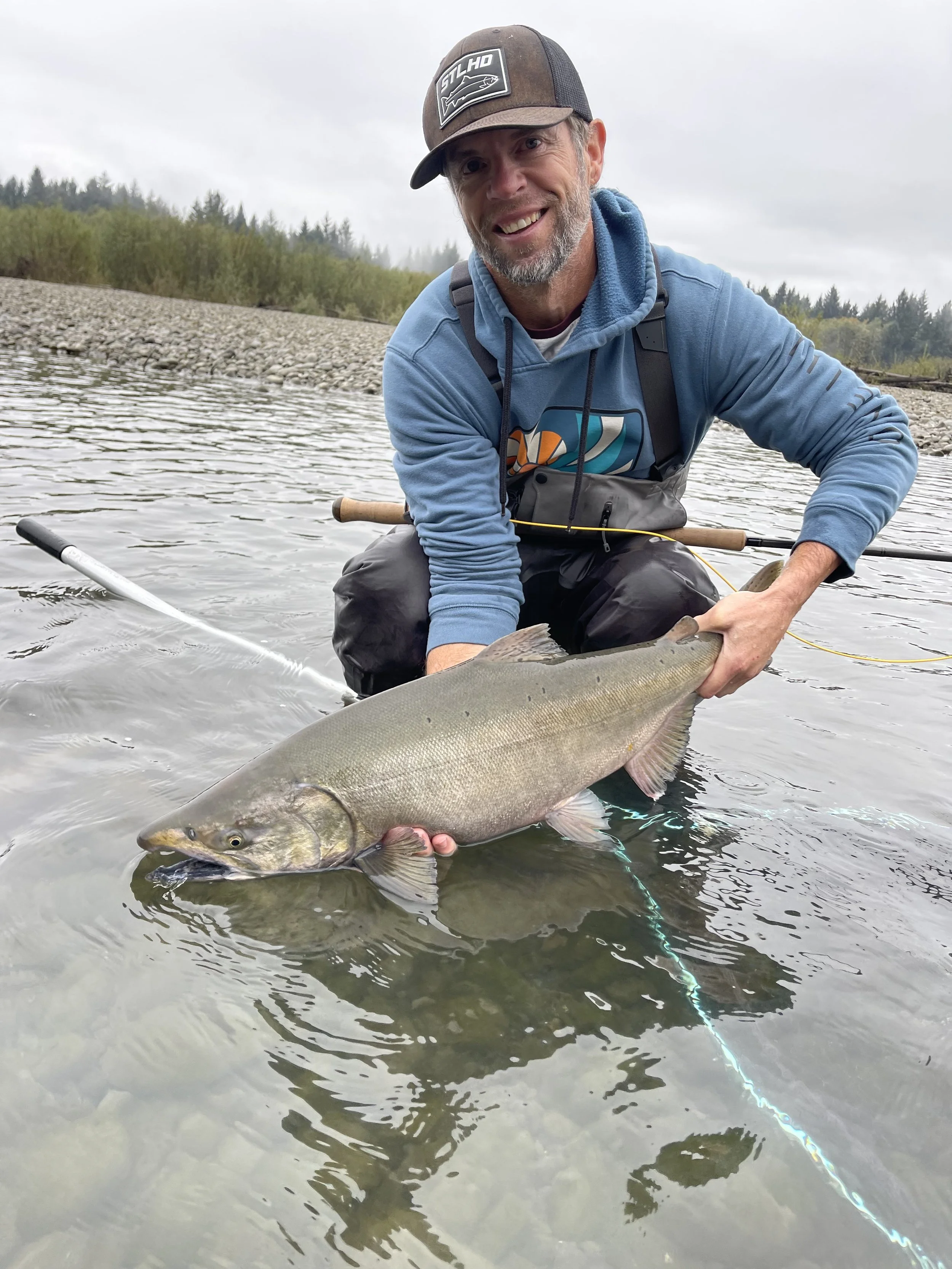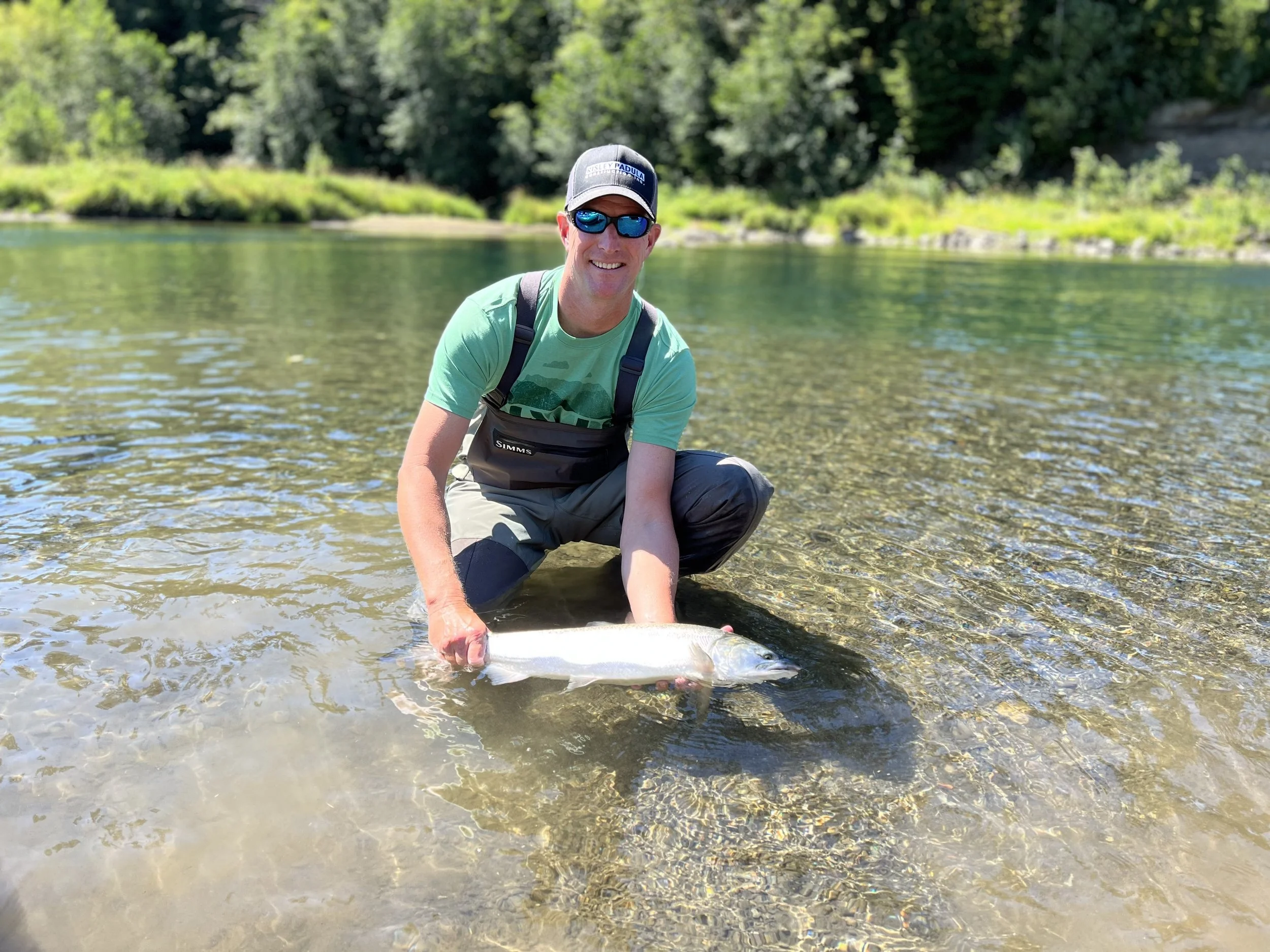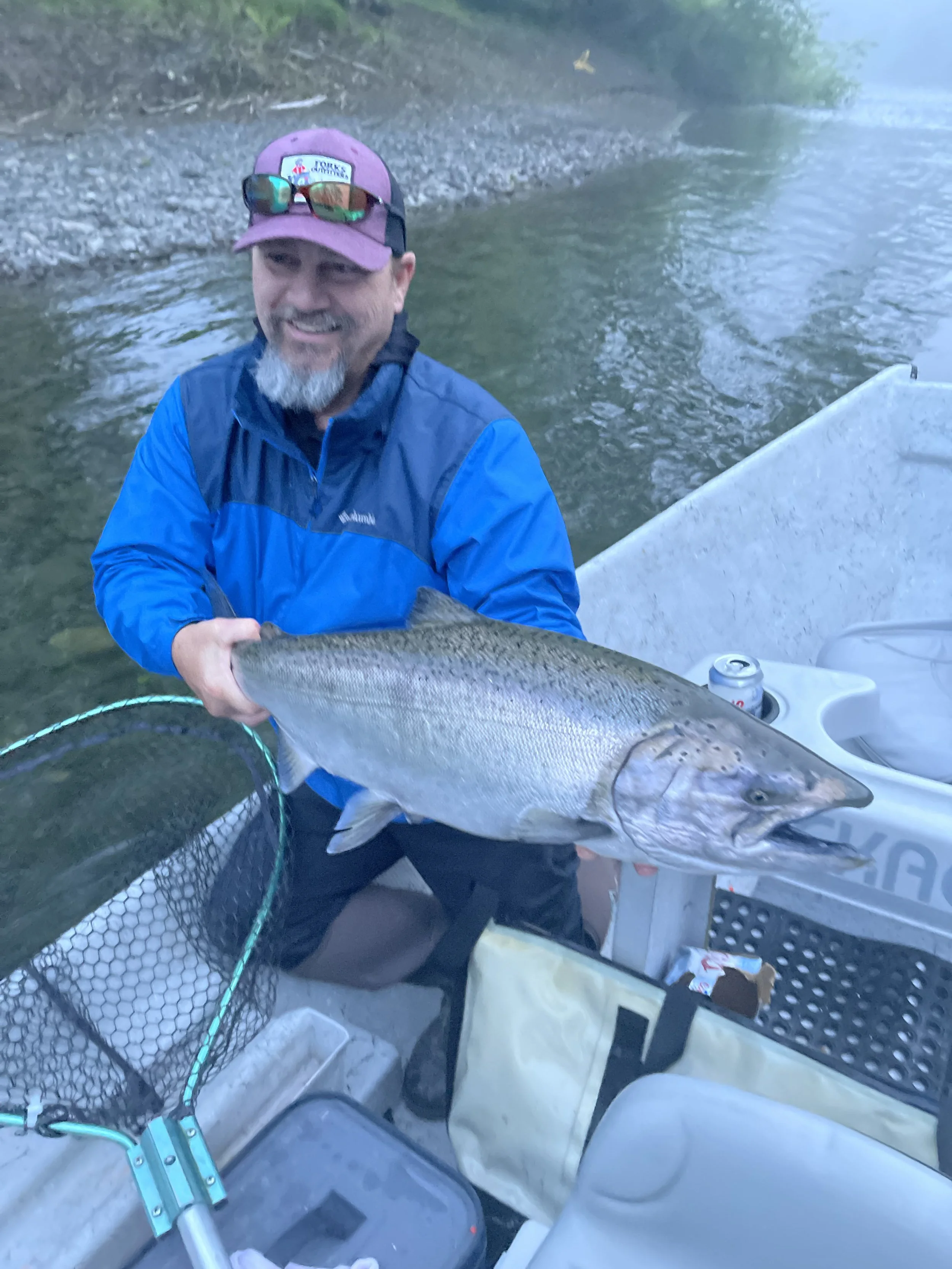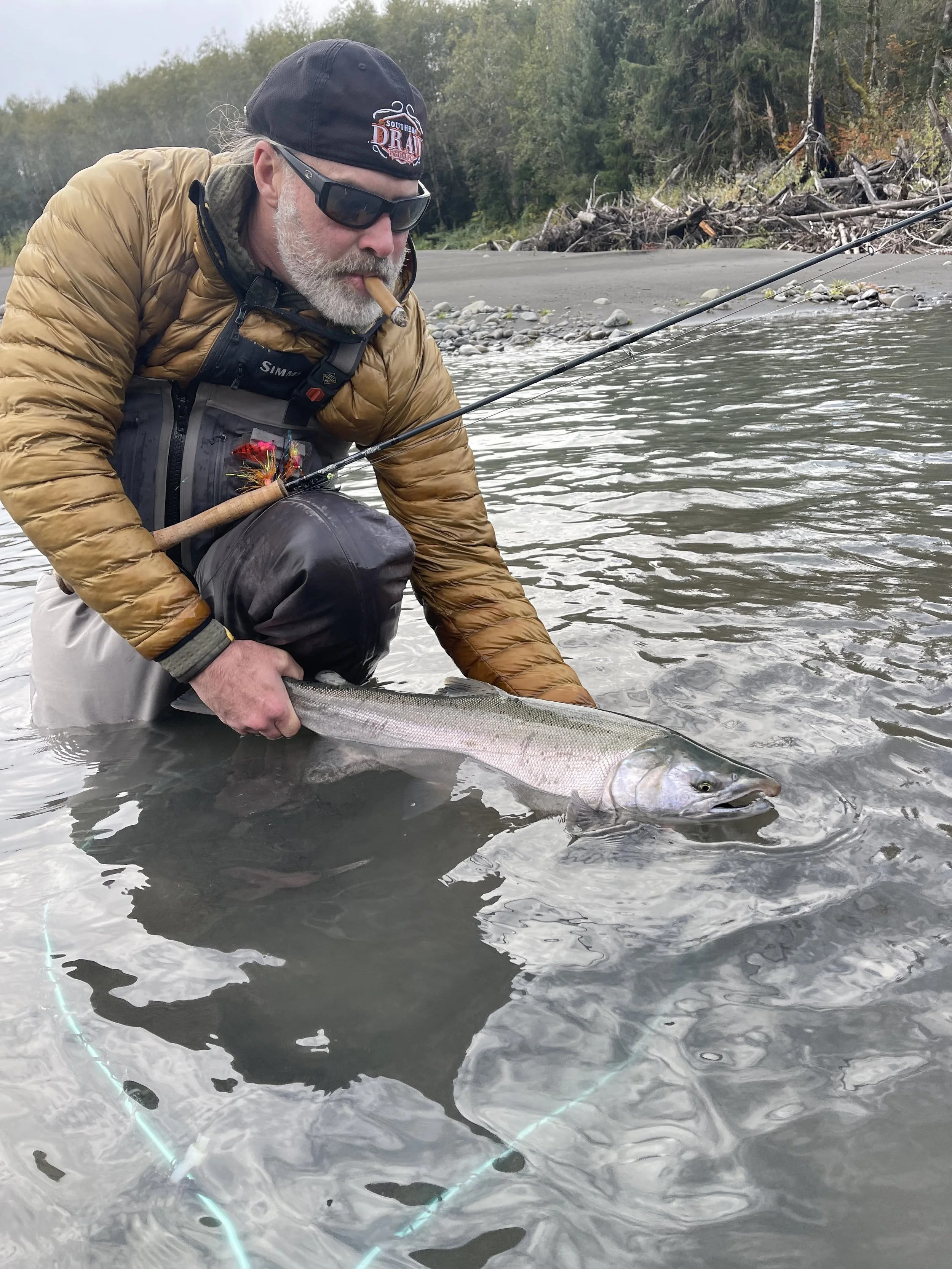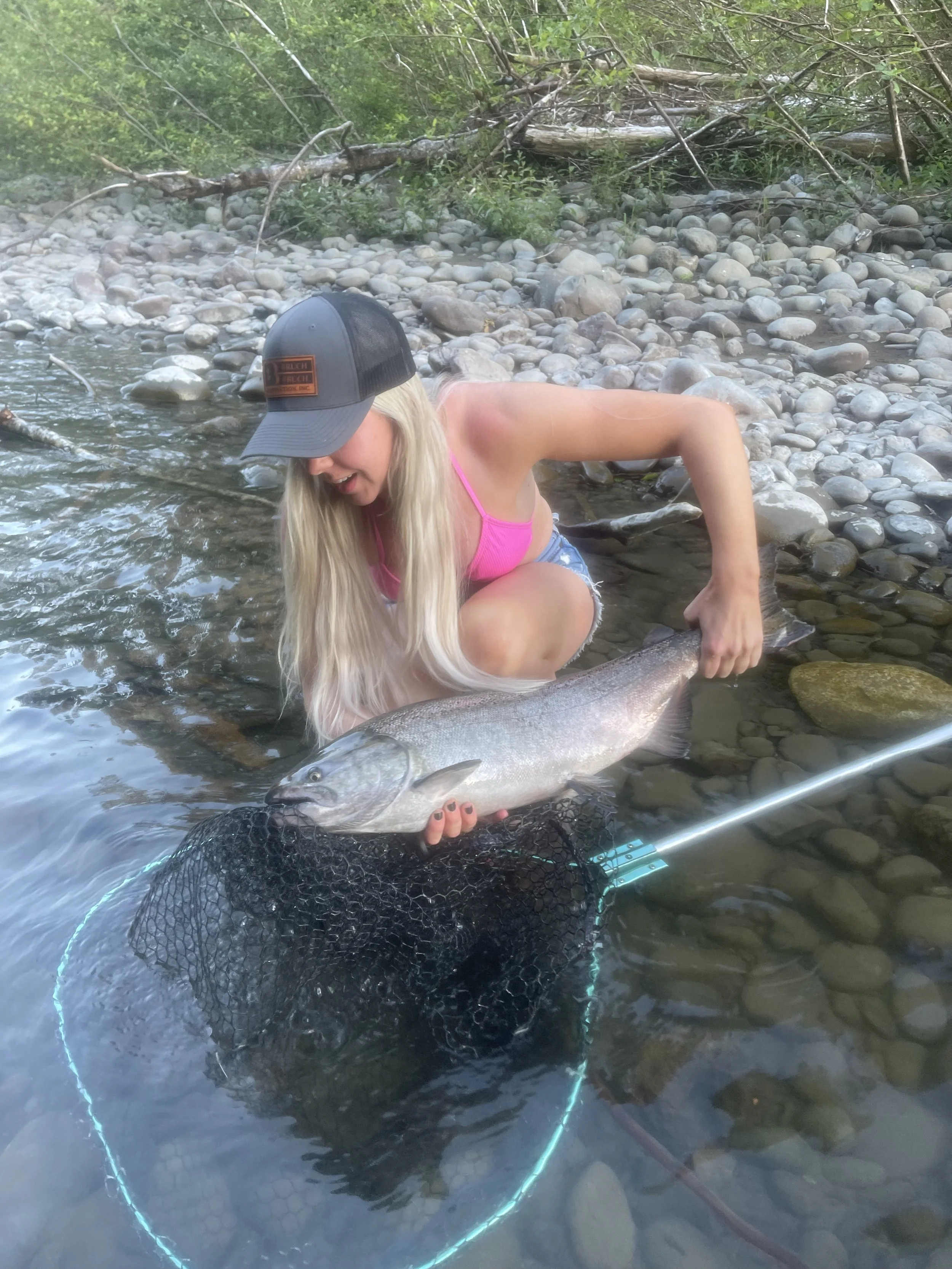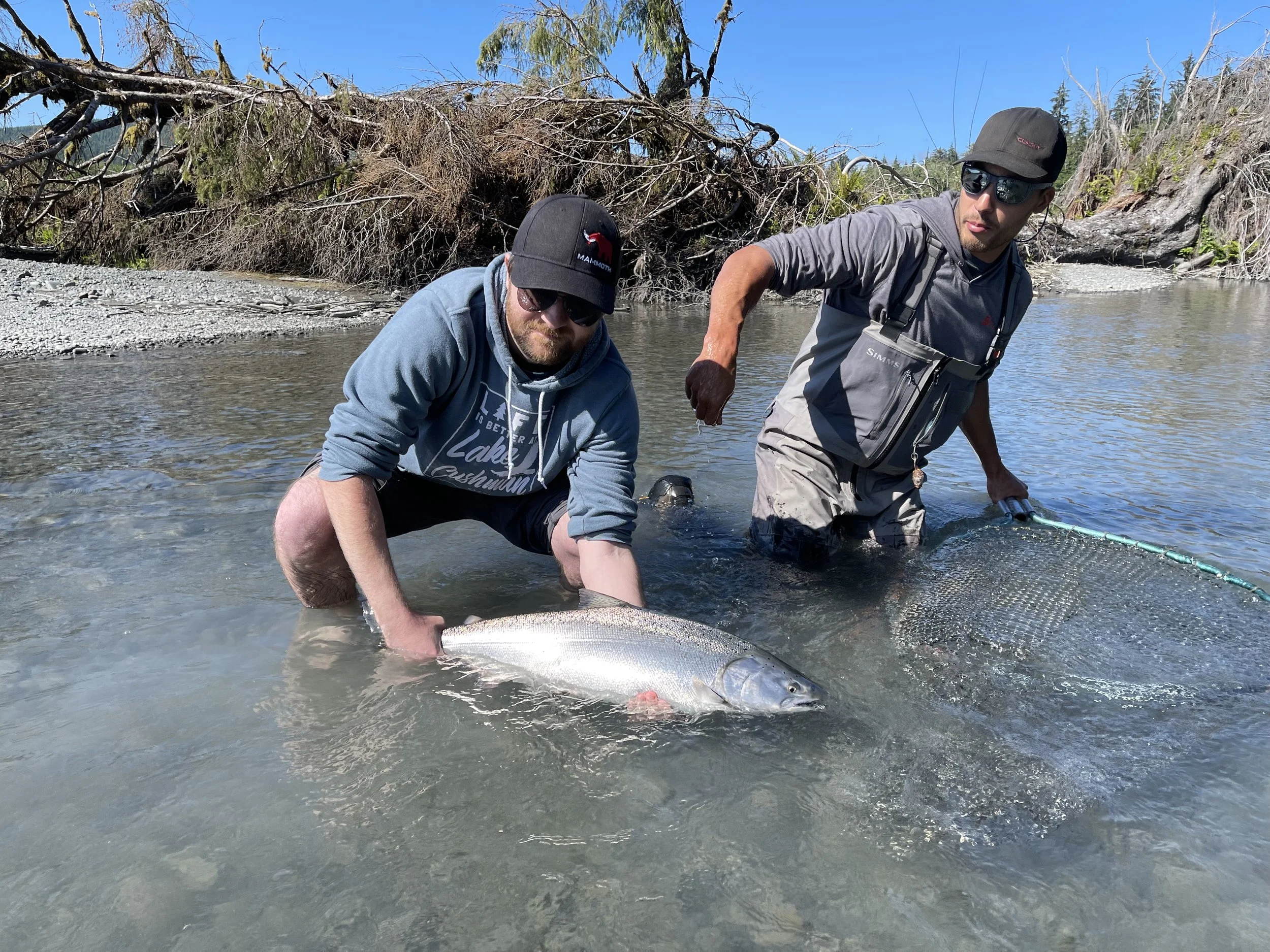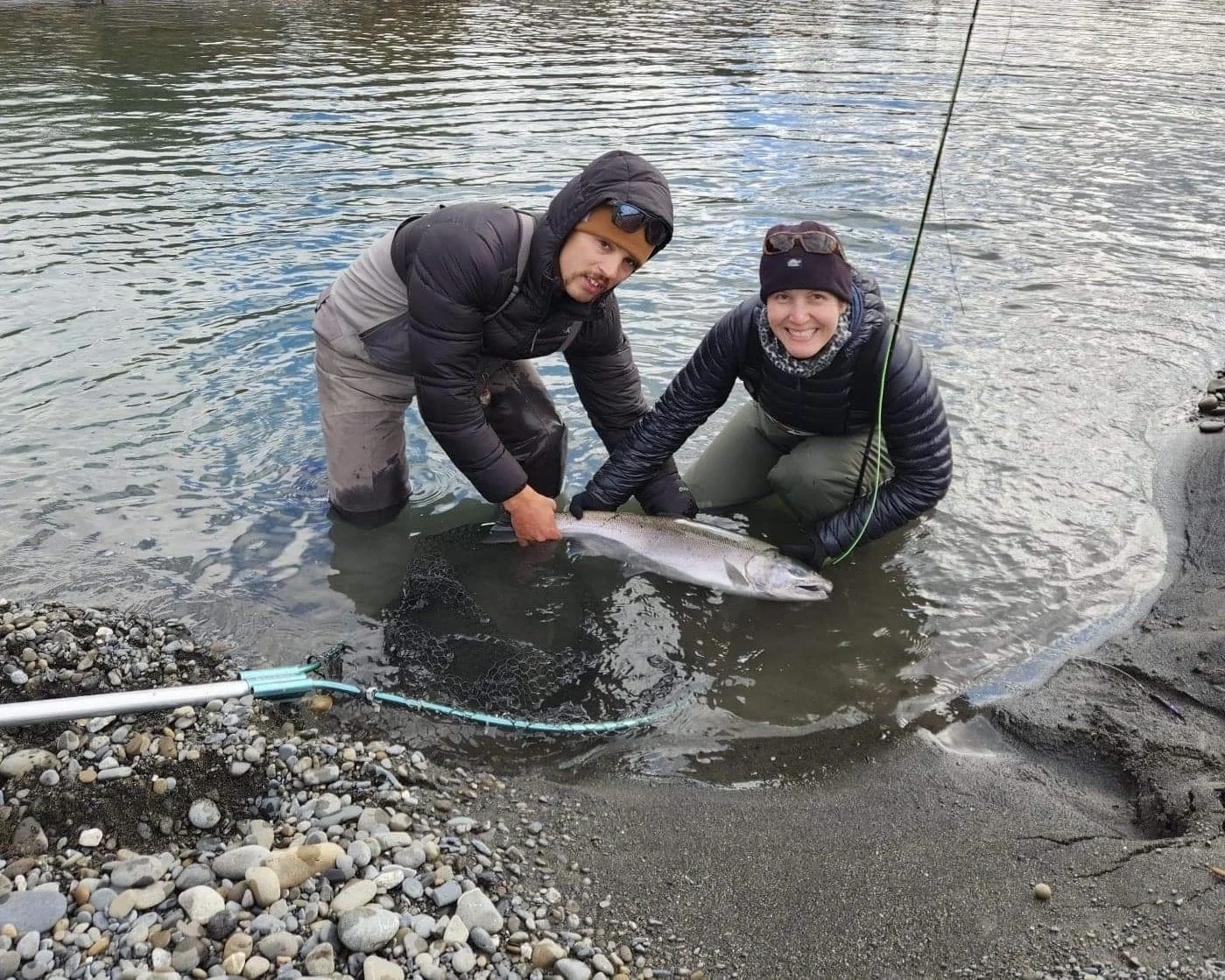Salmon
When? Spring, Summer, and Fall
Spring Chinoook: May 1st- July 15th
Summer Coho/Chinook July 15th-September 31st
Fall Chinook/Coho October 1st-November 25th
What Do I need to bring? A Washington state fishing License, a lunch
These are typically the fish that are most responsible for getting people hooked into this sport. They can grow to well over 30 pounds and during their peak runs, there can be thousands of fish around, making the odds well in your favor to have a successful day. The Olympic Peninsula gets both hatchery and wild returns of salmon in all of our rivers and we spend all year long targeting them with both fly rods and gear.
Chinook salmon, also known as king salmon, are the largest species of Pacific salmon and are highly valued for their size. They have a distinctive silver-blue color with black spots on their back and tail. Chinook salmon are anadromous, meaning they hatch in freshwater rivers and streams, migrate to the ocean to grow, and then return to their native streams to spawn. They have different runs throughout the year, including spring, summer, fall, and winter runs, depending on the region
Coho salmon, also known as silver salmon, are another species of anadromous Pacific salmon. They have a sleek silver body with a bluish-green back and small black spots on their back. Coho salmon typically return to freshwater during late summer and through fall. They are known for their aggressive feeding behavior and strong fighting ability, making them popular among anglers.
Recommended Gear: 8 weight single handed rods with WF floating lines. For Spey rods anything from 11’ to 13’6 #8 rod with floating heads and sink tips.
Daily Rates
1 Angler: $525
2 Anglers: $600
3 Anglers: $750
*Pricing will vary depending on the season

